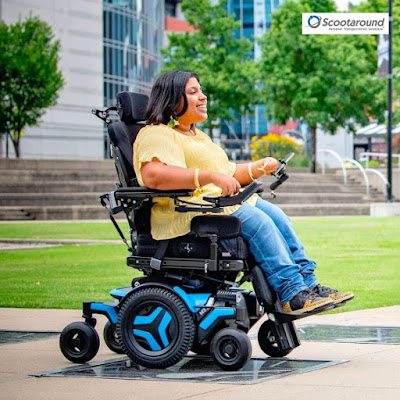Design with Purpose: Unveiling the Ergonomics and Customization Options of Power Wheelchairs
Introduction
In the realm of mobility assistance, power wheelchairs have emerged as a remarkable technological advancement, significantly enhancing the quality of life for individuals with mobility challenges. These ingenious devices empower users with limited mobility to regain their independence and seamlessly navigate the world around them.
However, beyond just functionality, the design of power wheelchairs is evolving to cater to user needs with ergonomic considerations and customizable options, making them more user-friendly, comfortable, and personalized. In this blog, we will delve into the world of power wheelchairs and explore the essential aspects of their design, focusing on ergonomics and the vast array of customization options available.
The Evolution of Power Wheelchair Design
The history of mobility aids dates back to ancient times, where rudimentary devices were created to assist individuals with walking difficulties. However, it was not until the 20th century that power wheelchairs began to emerge, driven by advancements in engineering and technology. Initially, these early power wheelchairs were bulky and lacked many of the features available today.
Over the years, power wheelchairs have undergone significant transformations in design, becoming more compact, lightweight, and versatile. The modern power wheelchair not only ensures smooth movement and control but also emphasizes user comfort and customization to a great extent.
Ergonomics in Power Wheelchair Design
Ergonomics plays a crucial role in the design of power wheelchairs, as it focuses on maximizing user comfort and reducing the risk of musculoskeletal strain. A well-designed power wheelchair takes into consideration various factors, such as the user's body measurements, posture, and movement patterns, to provide a comfortable and supportive seating position.
1. Seat Design
The seat is at the heart of the power wheelchair's ergonomics. It should be designed to distribute pressure evenly across the user's body, minimizing the risk of pressure sores. Many modern power wheelchairs feature contoured seat cushions and adjustable backrests, allowing users to find their ideal seating position.
2. Armrests and Footrests
Adjustable armrests and footrests are essential components of ergonomic power wheelchair design. They provide support for the user's arms and legs, promoting proper alignment and reducing fatigue during extended use.
3. Control Interface
An ergonomic control interface is vital for ease of use and maneuverability. The placement of joystick controls, buttons, and other features should be intuitive and accessible without straining the user's arms or hands.
4. Suspension System
A well-designed suspension system is crucial for a smooth ride, especially on uneven terrain. It absorbs shocks and vibrations, minimizing discomfort and ensuring a stable and controlled journey.
Customization Options for Power Wheelchairs
To cater to the diverse needs of users, manufacturers of powerchairs offer an extensive range of customization options. These options allow users to personalize their wheelchairs to suit their unique requirements, preferences, and lifestyles.
1. Seating and Backrest Options
Power wheelchair users have the freedom to choose from various seat widths, depths, and backrest heights to find the most comfortable and supportive fit. Additionally, they can opt for different materials and cushion types, such as memory foam or gel-infused cushions, to address specific pressure management needs.
2. Control Systems
The control interface of a power wheelchair can be customized to accommodate the user's mobility limitations. Manufacturers offer various control options, including traditional joystick controls, head arrays, sip-and-puff systems, and touch-sensitive controls, among others.
3. Power and Battery Options
Electric wheelchairs come with different battery options, offering varying travel ranges on a single charge. Users can select the battery capacity that aligns with their daily mobility requirements. Additionally, advanced power wheelchairs may have quick-charge capabilities for added convenience.
4. Wheel and Tire Options
The type of wheels and tires significantly impact the power wheelchair's performance and stability. Users can choose from a variety of wheel sizes, tire treads, and materials based on their intended usage, whether indoors, outdoors, or a combination of both.
5. Accessories and Enhancements
Numerous accessories and enhancements are available to make power wheelchairs more functional and personalized. These may include weatherproof covers, cup holders, customized armrests, and even mounting points for additional devices like communication aids or trays.
Conclusion
The design of power wheelchairs has come a long way, placing paramount importance on ergonomics and customization options to ensure an optimal user experience. By incorporating ergonomic principles, power wheelchairs provide unparalleled comfort and support, reducing the risk of physical strain and enhancing overall well-being. Moreover, the vast array of customization options empowers users to tailor their wheelchairs to their exact needs and preferences, further boosting their independence and confidence in navigating their surroundings.
As technology continues to advance, we can expect power wheelchairs to become even more sophisticated, catering to an ever-expanding range of mobility challenges. With ongoing research and innovation, these life-changing devices will continue to evolve, breaking barriers and enabling users to embrace life to the fullest with purposeful design and personalized solutions.


.jpg)

Comments
Post a Comment